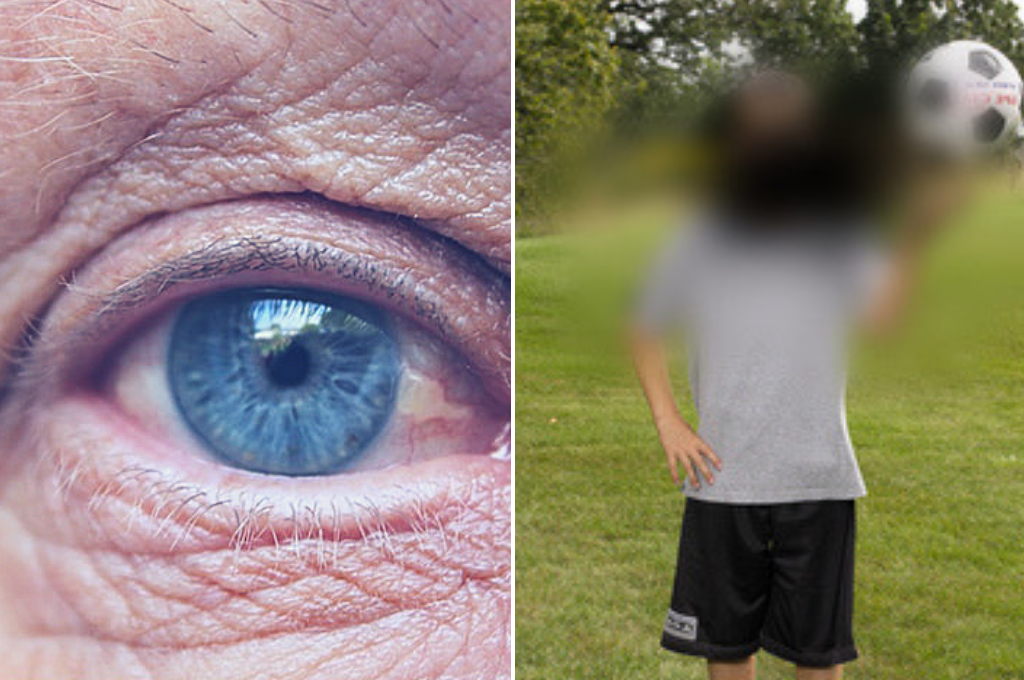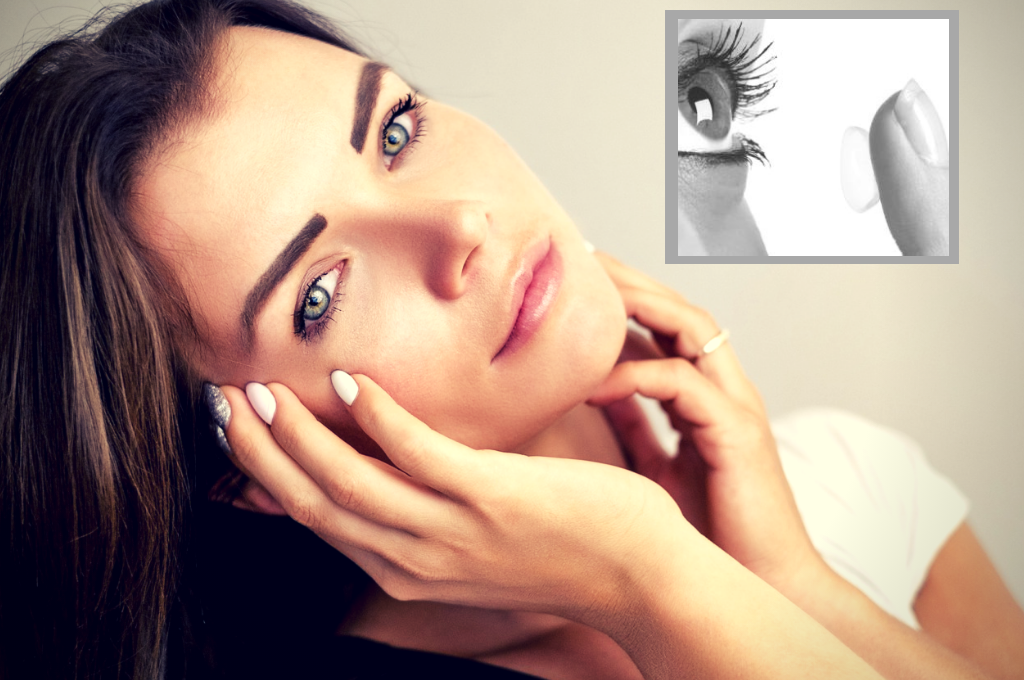
Macular degeneration is the most common cause of blindness in developed countries. Macular degeneration also affects many people in developing countries where cataract and glaucoma dominate. It is the third cause of blindness worldwide. Studies say that macular degeneration will affect more people in the coming years. Macular degeneration is a disease that common among those aged 50 years and above. It affects the most important part of the retina – the macula.
To understand the meaning and definition of macular degeneration in simple words, let us understand the condition first. Let us find out why it is called “macular degeneration”.
Macular Degeneration Definition & Meaning
People afflicted with this condition usually visit their doctors with a chief complaint – loss of their central vision. They report that they see a black spot in the center of their vision. They also experience loss of the ability to see details of faces, difficulty reading, and diminished capacity to differentiate colors.
Specialists try to find the problem with these people by running diagnostic tests. Aside from abnormal changes in the central retina, they usually find a buildup of deposits of abnormal material around the macula. These deposits appear as yellow spots, which are called “drusen”. These are accumulation of damaged cellular components of deteriorated tissues.
Macular Degeneration
Researchers wanted to give this eye condition a name or a term that differentiates it from other vision problems. Because the abnormal changes affect the macula, they call it “macular”. And because it is the result of tissue deterioration, they call it “degeneration”. So, the final name of this condition is “macular degeneration”.
The macula is the most important part of our eyes. Located at the center of the retina, it gives us central, detailed, and color vision.
Macular degeneration affects the macula in stages while others call it types. So, what are the types or stages of macular degeneration?
Macular Degeneration Stages or Types
These types are called “dry” and “wet” macular degeneration. Usually the disease starts as dry macular degeneration and it may stay in the dry stage in some people. However, it may progress to “wet” type in others.
1. Dry Stage Macular Degeneration
This is the starting stage of macular degeneration. Majority of macular degeneration cases are of this type.
This stage includes the presence of yellow abnormal deposits called drusen. Considering these deposits as a disease or part of “normal aging” is controversial. This accumulation of these yellow deposits starts as small nodular spots called “hard drusen”. These are sharply out-lined with distinct borders. This hard drusen may turn into soft drusen over time.
Soft drusen is larger with indistinct borders. The development of soft drusen predisposes the patient to the second stage or type of macular degeneration which is the wet stage of macular degeneration.
2. Wet Stage Macular degeneration
This stage is characterized by the growth of new abnormal blood vessels “neovascularization” in the macula from underlying tissues. It is also called the “neovascular” or “exudative” stage.
This growth of new blood vessels damages the cells of the macula. Also, these new vessels are so fragile and usually leak blood and exudates which lead to severe problems in vision.
How do these two types affect vision?
Macular Degeneration Symptoms
Patients may completely have no symptoms in the beginning of macular degeneration.
After a while, patients with dry and wet macular degeneration may still have no symptoms or may have vague visual complaints including: the need for increased light intensity when reading and doing tasks, fading of vision after short periods of being under bright light, and rapid visual fatigue when reading.
The symptoms start in the wet stage as blurred vision. The patient sees straight lines as tilted, wavy, and distorted. This is called ” metamorphopsia.” Another symptom patients experience in the wet stage is seeing things as smaller than they actually are or ” micropsia”.
The unique symptom of macular degeneration experienced in the wet stage is seeing black spots in the center of visual field and images.
Macular Degeneration Causes
The causes of macular degeneration are still unknown. Researchers are still looking for the exact cause and mechanism that leads to the development of this medical problem. However, in the process of searching for the certain cause, scientists found many links and associations. These may be called the risk factors for macular degeneration which include:
- Age is the biggest predisposing risk factors of macular degeneration. The condition usually affects people 50 years age and older. The risk factor of developing macular degeneration increases after 65 years. Also, about 30% of people above 75 years age have macular degeneration.This high relation between age and macular degeneration leads to controversy in whether macular degeneration can be considered part of the “normal aging” process or a pathologic process.
- Hereditary and environmental factors. Studies found that hereditary and specific genetic factors predispose certain people to develop macular degeneration. Family history also increases the risk of getting macular degeneration and this supports the theory of hereditary factors or causes. Family members usually share the same environmental factors, and studies found that the environmental circumstances have a role to play.
- Ethnic factors. It is found that specific races are more likely to develop macular degeneration. The disease affects whites more than blacks, particularly the more severe stages of the disease.
- Sex. Macular degeneration affects females more than males. This may support the presence of a genetic factor that plays a significant role in the development of the condition.
- Excessive light exposure. Studies found people who undergo excessive sunlight exposure are more likely to develop macular degeneration than those who are less exposed. Ultraviolet light rays have been found to increase the chances of getting macular degeneration
Macular Degeneration Treatment
There is no known cure that restores vision or heals macular degeneration. However, there are many things that can be done by the patient and the doctor to manage this disease.
Persons diagnosed with macular degeneration in the early dry stage should be monitored closely. The patient should visit his eye doctor every 6 months. He should also be very aware of any development of new symptoms. If he feels any new symptoms, he should visit his doctor immediately even if it is not the time of his next visit. This will lead to an early detection for any development of the disease to the wet stage.

The patient should also avoid excessive sunlight exposure and wear colored contact lenses or sunglasses to protect the eyes from ultraviolet rays. He should have a balanced diet full of fruits and green leafy vegetables. Smokers are advised to quit smoking and reduce or stop alcohol consumption.
The above recommendations are especially important in the early dry stage to delay the progression of the disease, and to prevent the development of new blood vessels and stop the beginning of the wet stage. These health teachings are also applicable in the wet stage of the disease to prevent the occurrence of severe complications.
Once the wet stage develops, an intervention must occur to save what could be saved. Current intervention options available are:
Anti-VEGF Therapy: This is one of the most advance treatments of wet macular degeneration available. Scientists discovered a group of proteins called vascular endothelial growth factor (VEGF) which plays a significant role in the growth of new abnormal blood vessels in the wet stage. They also discovered the drugs that prevent these proteins from triggering the growth of new abnormal blood vessels which are the anti-VEGF drugs. Anti-VEGF drugs are applied to the eye by injection. A small amount of the drug is injected at the posterior part of the eye.There are three FDA approved Anti-VEGF drugs:
a – Macugen which is the first approved (in 2004). It has limited efficacy which make it inferior to newer drugs.
b – Lucentis which was approved in 2006. Lucentis proves great results in the conducted studies. Two years study found that Lucentis slows the rate of vision loss and stops the progression of the disease for the period of the study. The drug is injected in one month intervals.
c – Eylea which was approved in 2011. This drug is applied in longer intervals (every month for the first 3 months and then every 2 months). It shows similar or better efficacy than Lucentis in most people.
Laser photocoagulation : This includes applying laser impulses on the new blood vessels to destroy them. This will prevent them from branching out to new blood vessels and also protects the macula from bleeding and exudates. The process also involves destroying the area of the macula which contains these vessels. So, it is just destroying an affected area to save the other intact areas of the macula. It is more like cutting a toe in the diabetic patient to save the whole leg. The vessels growth may recur again after laser photocoagulation. Recurrent blood vessels need a second laser photocoagulation surgery to destroy them.
Optical & Low vision Management: Macular degeneration patients are usually referred to the low vision department. There are specialized optometrists in this department to give special care for people suffering from untreatable loss of vision. The low vision advices and devices that are so beneficial for macular degeneration patients include:
a – Use of direct illumination for reading and all tasks. This will improve the ability to read better than in regular light conditions.
b – Use of magnification devices for persons with macular degeneration gives considerable enhancement for their vision. There are magnification devices for this purpose.
Magnifiers for distant vision include monocular and binocular telescopes, and spectacle-mounted telescopes. Magnifiers for near vision include : hand held magnifiers, stand magnifiers, video Magnifier (CCTV) , reading Machines (Scanners with voice output) and spectacle-mounted microscopes.
c – The use of large prints and large computer fonts also help the person read with ease. Microsoft windows system includes accessibility features special for persons who have visual problems. This feature is found in the PC setting or control panel under the name “Ease of Access”.
You can also open this feature directly from the keyboard by clicking the (logo key+U). You can visit the Microsoft site for more information on how to use this feature.
d – Use of tints on the lenses of eyeglasses also enhances the vision. Low vision specialists discovered that the red tint enhances vision in macular degeneration.
e – Special absorptive contact lenses are also beneficial for persons with macular degeneration. They block harmful light rays including ultraviolet rays. They also increase contrast and reduce glare and photophobia.
